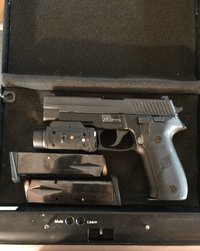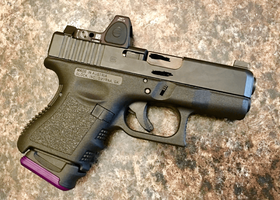There is always a near and far zero .this graph makes no sense - is it zeroed at 2yds? a 25yds there is a second zero, it is not how it`s done. make a graph with a 15yds to be first zero and see how the curve will go.
red dot sight will be 1"-1.5" above the barrel.
Let's discuss different 9mm zeros for a PCC - AR15.COM
Firearm Discussion and Resources from AR-15, AK-47, Handguns and more! Buy, Sell, and Trade your Firearms and Gear.www.ar15.com
Also dependent on target size tou can figure out your point blank range
3-7 yards will cover alot of cals for a good zero. From 0-100 yards aiming at a full torso size target.




